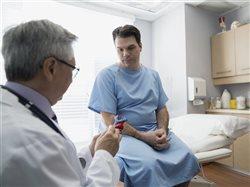
The heart screening you should do now
(BPT) – Did you know a simple test of your legs may be able to tell you if you have a higher risk for heart disease?
The test is quick, painless and non-invasive. A health professional fits pressure cuffs around your ankles and upper arms, and uses a small ultrasound device to measure the systolic blood pressure in your limbs. It is simple and painless. The disease is called Peripheral Arterial Disease or PAD.
Why is this important?
Heart disease is the leading killer of Americans of all age groups, races and genders. Detecting heart disease risks early is important in order to live an active and healthy life for as long as possible. Yet the general public remains largely unaware of PAD as indicator of heart blockages.
A recent study by University of California researchers, published in the journal Circulation Research, found a strong link between PAD and coronary artery disease and stroke. PAD occurs when fatty deposits build up in the small arteries outside the heart, and it usually affects the arteries that supply blood to legs and feet, according to the American Heart Association (AHA). The condition can not only cause tissue damage in the affected area, it could be a sign of chronic blockages throughout the arteries in a person’s body. About 8 million Americans have PAD, according to the Centers for Disease Control and Prevention.
Shockingly, the CDC says that 40 percent of people who have PAD may have no symptoms at all, and so be unaware they have the condition. This is why it is important to get screened. You may not have any idea that you are at risk. Having a screening may give you a hint at what lie in your future – in time to do something about it.
People who do have symptoms may feel muscle pain in the calves, hips and thighs while doing any kind of exercise that involves leg muscles – such as walking or climbing stairs, or experience cold legs, wounds that heal poorly or slowly, and burning, tingling or numbness in the legs.
Common PAD risk factors include:
* Smoking – The AHA says people who smoke may have four times the risk of developing PAD.
* Being overweight or obese
* Diabetes
* A sedentary lifestyle
* High cholesterol
* High blood pressure
* Family history
* Age – Approximately 12-20 percent of people older than 60 have PAD, according to the CDC.
Because you can have PAD and experience no symptoms, many people may be unaware they have it – and that they’re at greater risk for developing heart disease. While health insurance may cover a PAD test for people who show symptoms of the disease, health experts recommend anyone with certain risk factors should be screened.
You don’t need a doctor’s prescription or a trip to the doctor’s office to have the test done; Life Line Screening performs affordable PAD testing in community settings throughout the country. To find out when a screening clinic may be scheduled in your area visit www.lifelinescreening.com/HeartCheck or call (877) 754-9631.


